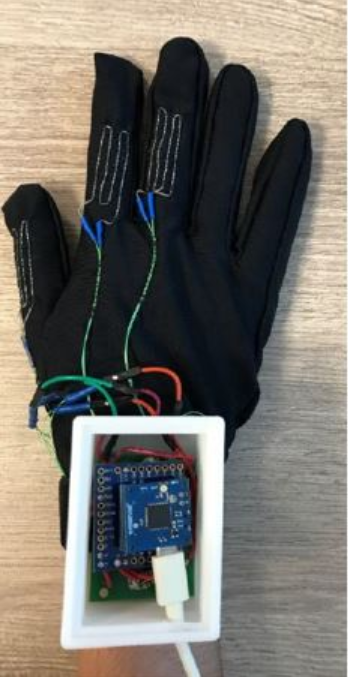Smart glove for rehabilitation gaming
Project Motivation
Physical rehabilitation is mostly offered only at specific health centers, requiring patients to travel down. This causes patients inconvenience and over time, patients may lose motivation to carry out their rehabilitation. This is especially prevalent in the cases of Parkinson’s Disease and Stroke, where elderly constitute majority of patient population. Therefore, there is a need for a rehabilitation system that is convenient and independent and capable of offering personalized services while motivating patients to undergo their rehabilitation. In other words, in order to improvise the current rehabilitation system, a seamless, portable and hassle-free solution that prioritizes comfort of the patients is required.
Design Solution
Gaming in rehabilitation is one solution to offer convenient rehabilitation while motivating patients. We developed a lightweight wearable device to potentially assist stroke and Parkinson’s disease patients in hand rehabilitation, especially with Activities of Daily Living (ADL), through gaming. The wearable device consists of two parts – a glove integrating soft and flexible microtubular sensors developed at the MechanoBioengineering Laboratory and compact on-board electronics to map patient hand gestures to a three-dimensional micro-game on Unity, by means of two types of sensors – microtubular sensors and Inertial Measurement Unit (IMU).
As the glove is catered to different individuals over a relatively long period of treatment, the robustness of the microtubular sensors, and the fit of the glove are key areas of focus. The seamless integration of microtubular sensors makes them imperceptible, along with a user-friendly glove design to aid in fast adaptability of the patient. The microtubular sensors work on the principle of piezo resistivity and the resistance changes are mapped to translation and shooting in the micro-game through flexion of thumb and index finger, respectively. The IMU maps axial orientation and movement of patient's hand through wrist abduction-adduction (“pitch” or up-down) and wrist flexion-extension (“yaw” or left-right).
The proof-of-concept developed in this project is capable of offering personalized services as the glove size and therapy movements can be tailored to fit the needs of the patient. Future scope of this project aims to extend its potential towards Virtual Reality.


Project Team
Students:
- Nelisha Ann Maria (Biomedical Engineering, Class of 2020)
- Kuek Kia Ing (Materials Science & Engineering, Class of 2021)
Supervisors:
- Prof Lim Chwee Teck (bielimct@nus.edu.sg)
- Dr Yeo Joo Chuan (jcyeo@nus.edu.sg)

